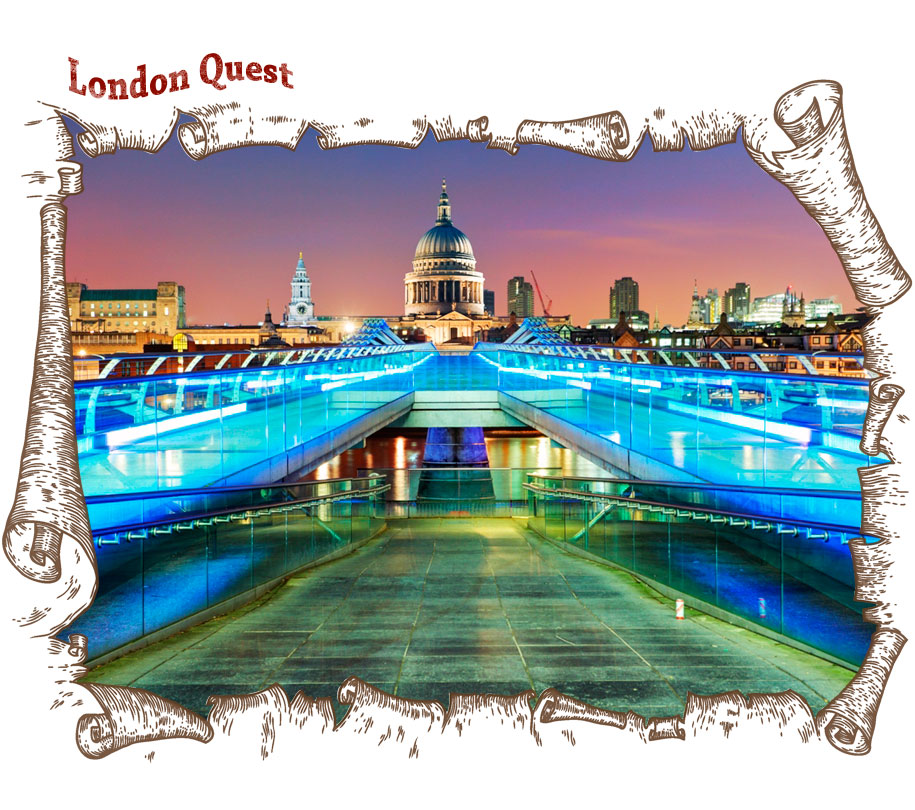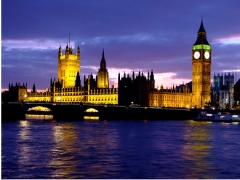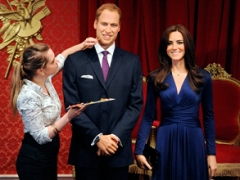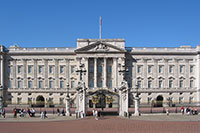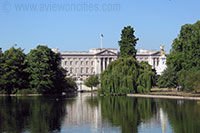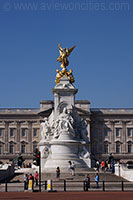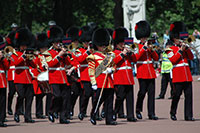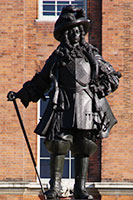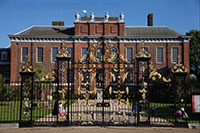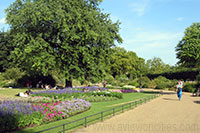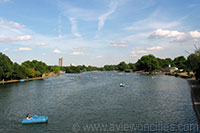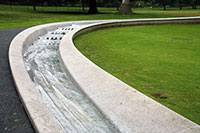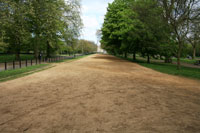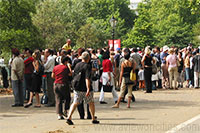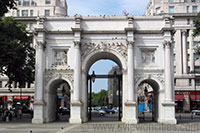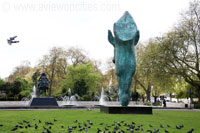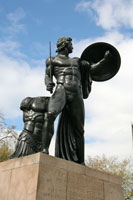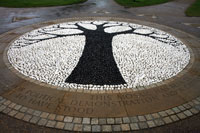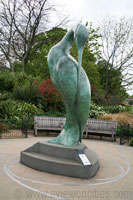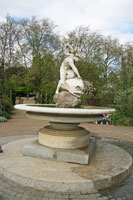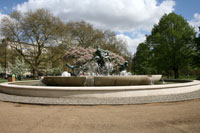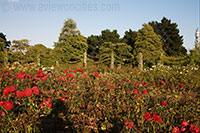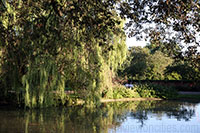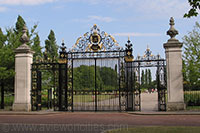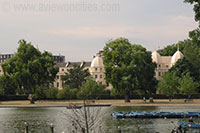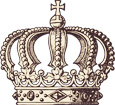Process
Using the Internet answer the following questions. Questions:
London As well as being the capital of England, London is the capital of the United Kingdom. London was founded by the Romans in 43 A.D. and was called Londinium. In 61 A.D. the town was burnt down and when it was rebuilt by the Romans it was surrounded by a wall. That area within the wall is now called the City of London. It is London's commercial and business centre. It contains the Bank of England, the Stock Exchange and the head offices of numerous companies and corporations. Here is situated the Tower of London. The Tower was built by William the Conqueror who conquered England in 1066. He was crowned at Westminster Abbey. Now most of the Government buildings are located there. During the Tudor period (16th century) London became an important economic and financial centre. The Londoners of the Elizabethan period built the first theatres. Nowadays the theatre land is stretched around Piccadilly Circus. Not far from it one can see the British Museum and the Covent Garden Opera House. During the Victorian period (19th century) London was one of the most important centres of the Industrial Revolution and the centre of the British Empire. Vocabulary: capital – столица http://www.alleng.ru/engl-top/414.htm
|
Group 1: Paces of Interest in London. Find out information about Places of Interest in London. London Talking about London, I should like to say, that it is the capital of the United Kingdom, its political, economic and commercial centre. It is one of the largest cities in the world. Its population is about 8 million people. London was founded more than 2000 years ago. It is one of the oldest and most interesting cities in the world. Traditionally London is divided into several parts. They are the City, Westminster, the West End and the East End. They are very different from each other. The heart of London is the City. It is the oldest part of London, its financial and business centre. Many banks, offices and firms are situated there. Few people live there, but over a million people come to the City to work. Westminster is the historic, governmental part of London. The Houses of Parliament and the government and administrative buildings are in Westminster; The West End is the part where rich people live. It is the most beautiful part of London. The best hotels, shops, restaurants, clubs and theatres are situated there. There are splendid houses and lovely gardens belonging to wealthy people. As for the East End, it is an industrial district of London. There are many factories there. It is one of those areas of London where working people live. Speaking about the sights of London, I should like to say that there are a lot of places of interest in London. It's notorious that London stands on the river Thames. Crossing the river by the Tower Bridge, we can see to Tower of London. It is one of the oldest buildings of the city. Many centuries ago it was a fortress, a royal palace and then a prison. Now it is a museum of arms and Crown Jewels. Near the Houses of Parliament is Westminster Abbey. It is a very beautiful church built over 900 years ago. Nearly all English kings and queens have been crowned there. Many outstanding statesmen, scientists, writers, poets and painters are buried there. As you know, Buckingham Palace is the residence of the Queen of England. This is a beautiful building, standing in large gardens. Tourists always go to see the ceremony of changing of the Guard there. Not far away is the British Museum. It is the biggest museum in London, ft contains a priceless collection of ancient manuscripts, coins, sculptures and so on. It is also famous for its library. Besides, London is also famous for its beautiful parks. Hyde Park is Londoners' favourite resting place. Hyde Park is famous for its Speakers' Corner. Many people come to listen to speakers on politics and other subjects. As for me, I should like to visit London because I am interested not only in the English Language but also in British culture, traditions and history. Sights of London London is one of the world’s most enjoyable cities which stands on the beautiful river Thames. Visited by tourists in the millions, the city offers them an astonishing variety of scenes. Little damage occurred during World War I, but World War II brought tremendous destruction. Many buildings of great historic value were laid in ruins and today the face of London is changed. London has buildings that express all the different areas of its history. Many places in London are closely connected with the crown. They are: royal palaces, royal parks, roads and streets where beautiful ceremonies are hold. The most important building is Buckingham Palace, it is the official residence of Queen Elizabeth II. This Royal places use for royal processions. Westminster Abbey is a national shrine where kings and queens are crowned and famous people are buried. Founded by Edward the Confessor in 1050, the Abbey was a monastery for a long time. Near the West Door of the Abbey the Unknown Warrior lies in a simple grave commemorating the men who died in the First World War. St. Paul’s Cathedral has always dominated the centre of London. Londoners have a particular affection for St. Paul’s, which is the largest Protestant Church in England. The Tower of London was one of the first and most impressive castles after the Norman invasion of England in 1066. Thousands years ago William the Conqueror decided to build a strong fortress to protect the City of London, which he had just conquered. The Tower of London has been used for different aims: as a royal palace, an observatory, an arsenal, a state prison. But now it is a museum. All in all London is a perfect city which anybody can visit.
LONDON – TOP TEN SIGHTS: 01. The London Eye
02. Buckingham Palace
03. Big Ben & Houses of Parliament
04. Westminster Abbey
05. Whitehall (10 Downing Street & Cenotaph)
06. Tower Bridge & Tower of London
07. St Paul's Cathedral
08. Trafalgar Square & Nelsons Column
09. Piccadilly Circus & Eros
10. Shakespeare's Globe Theatre
http://xclass.my1.ru/publ/6-1-0-17
|
Group 2: Museums. Find out information about museums.
Madam Tussaud's Madam Tussaud's is the most popular and talked about wax museum in the world. There are wax models of the famous and infamous, both living and dead, from every walk of life. The museum is situated in Marylebone Road, not far from the street which is famous as the home of the first great detective in fiction, Conan Doyle's Sherlock Holmes. The wax figures are standing and sitting, and sometimes even moving and talking. They are extremely realistic and when they look at you, their eyes sparkling, you often feel uncomfortable in their company. Computer controlled figures (they are called audioanimatronics) are especially popular with the visitors. The Tower of London The Tower has been many things: a palace, a fortress, a prison, a place of execution, a Zoo. Today, it is best known as a historical museum. About 150 people and six ravens live here. Kings sometimes get strange presents. About 700 years ago King Henry III got 3 leopards, 1 elephant and a polar bear. He kept them in the Tower. The elephant died after two years but the polar bear was happy as it went swimming and fishing in the Thames with a strong rope round its neck. That was the start of the London Zoo. In 1835 all animals left the Tower and were sent to the Zoo in Regent's Park. Only the ravens stayed on. There are always at least 6 ravens at the Tower. The first ones probably built their nests here because they liked the old stone houses and walls. There is a story that they bring good luck to Britain, if they stay at the Tower. That's why they get "paid" meat and biscuits every day. But their wings are cut so that they can't fly away. They are not very friendly. Once one of them bit a German minister. The Beefeaters used to guard the Tower and its prisoners. Today they work mostly as guides. They show people around and tell stories about all the terrible things that have happened here. They still wear the high ruffs and scarlet tunics assigned to them during the reign of Queen Elizabeth I. The Crown Jewels are shown in the Jewel House. They are well looked after. Once they were stolen by a man called Colonel Blood. But he was caught just as he was leaving the Tower. Thomas Blood didn't have to go to prison. The king gave him a pension instead. It was in 1671.
http://engmaster.ru/topic/3152
|
Group 3: Palaces. To look for materials about Palaces.
Buckingham Palace Buckingham Palace, one of several palaces owned by the British Royal family, is one of the major tourist attractions in London. The Changing of the Guard in front of the palace always attracts plenty of spectators. The original building was constructed as a countryhouse in 1705 by the duke of Buckingham, John Sheffield. King George III bought the house in 1761 for his wife and had it altered by William Chambers.
King George IV as well as his younger brother and successor King William IV both died before the palace was completed. Queen Victoria was the first to reside in the palace. In July 1837, three weeks after her accession to the throne, she moved from Kensington Palace, where she grew up, to the new Buckingham Palace. The palace was expanded in 1850 with a new east wing. The wing added a large number of rooms to the palace, including an expansive forty meter (131 ft) long ballroom. The monumental facade of the east wing was built in 1913 by Aston Webb. It is this facade, facing the Mall and St James's Park, which is now known by most people. Royal Family A part of the palace is still used by the Royal family. A flag is hoisted each time the Queen is in the Palace. The palace is not only home to the royal family, there are also a number of staff members living here. The palace has about six hundred rooms, including a throne room, a ballroom, picture gallery and even a swimming pool. Some of these rooms can be visited during a couple of months in the summer - when the Royal Family is not in the palace - including the lavishly decorated State Rooms: the Throne Room, Green Drawing Room, Silk Tapestry Rooms, Picture Gallery, State Dining Room, Blue Drawing Room, Music Room and White Drawing Room are all part of the tour around the Buckingham Palace. Another interesting part of the palace that is open to visitors is the Queen's Gallery, where works of art from the royal collection are on display. The palace's stables, the Royal Mews, can also be visited. Here you'll find a number of royal horse-drawn carriages. Queen Victoria Memorial Right in front of the building is the Queen Victoria Memorial, designed by Sir Aston Webb and built in 1911 in honor of Queen Victoria, who reigned for almost sixty-four years. Changing of the Guard The changing of the guard takes place daily at 11 o'clock in front of Buckingham Palace.
Kensington Palace The brick palace in the Kensington Gardens was built in the early seventeenth century and served as the residence of several Royals, including Queen Victoria, who was born here. Nottingham House
When William III came to the throne in 1689, he decided not to live in the Whitehall Palace, at that time the residence of reigning Kings. He suffered from chronic asthma and bronchitis, so instead of moving into the Whitehall palace, located in the city center near the river, he bought the Nottingham house in Kensington, a village outside London where the air was much healthier. Kensington House
William III and his wife Mary II immediately commissioned architect Christopher Wren to expand the country house. With the help of Nicholas Hawksmoor he added several pavilions, a courtyard and a clock tower. It took seven years before the building, now renamed Kensington House, was completed. It became the official residency of the King after the Whitehall Palace was destroyed by fire in 1698. The Palace Kensington Palace was extended and improved several times during the reigns of Queen Anne, King George I and George II. It was still used until the accession to the throne of Queen Victoria in 1837, when she and her mother moved to the grander and larger Buckingham Palace.
The building started to deteriorate and by 1897 plans were made to demolish it. Queen Victoria, who did not want to have the building demolished while she was living convinced the Parliament to restore Kensington Palace. After the restoration, the State Apartments opened to the public May 24, 1899. The Palace was severely damaged during the Second World War, and it took until 1949 before the palace reopened. The Museum of London, which had occupied the building for some time moved to the Barbican in 1976 but the State Apartments can still be visited. It is also home to an exhibition dedicated to Royal Fashion. The collection includes dresses worn by former Queens as well as a number of dresses for Princess Diana, who occupied apartments in the north-west part of Kensington Palace from 1981 to 1997. http://www.aviewoncities.com/london/buckinghampalace.htm
|
Group 4: Parks and Gardens. Hyde Park Hyde Park, which opened to the public in 1637, is the largest of several royal parks in London that are connected to each other, forming one large green lung in the center of the city. The park is famous for its Speakers' Corner.
The other parks are the neighboring Kensington Gardens, Green Park and St. James's Park. Hyde Park covers more than 360 acres (142 hectares) and hosts many large events, including celebrations and concerts. It is also a popular place for jogging, swimming, rowing, picnicking and even horse riding.
In 1536 King Henry VIII confiscated Hyde Park from the monks of Westminster Abbey. It was used primarily for hunting. King Charles I opened the park to the public in 1637. The current park layout was planned by architect Decimus Burton in 1825. Serpentine
The Serpentine, a large artificial lake, is located at the south end of the park and extends northwards into the neighboring Kensington Gardens, where it is called Long Water. Queen Caroline, wife of King George II had the lake constructed in 1730. It is popular for boating and swimming. Diana, Princess of Wales Memorial Fountain
Just southwest of the Serpentine is a memorial installed in honor of princess Diana. The modern fountain, which more resembles an artificial stream rather than a fountain, was inaugurated in 2004 by Queen Elizabeth II. The memorial was designed by the American landscape architect Kathryn Gustafson, using computer modeling techniques. The circular fountain consists of 545 pieces of Cornish granite. Water flows from two sides at the top into a small pool at the bottom. Rotten Row
At the south end of Hyde park is Rotten Row, a famous bridle path. The road is almost four miles long (6,4 km) and is now used as a horse riding and jogging route. In the seventeenth century the road was often used by William III. The king found the walk from Kensington Palace to St. James's Palace too dangerous, so he had oil lamps installed along the route, thus creating the first lit public road in England. The term 'Rotten Row' is derived from the French 'route du roi' or King's road. Speakers' Corner
In the nineteenth century Hyde Park had become a popular place for meetings. In 1872, in response to riots that erupted after police tried to disband a political meeting, Speakers' Corner was established to create a venue where people would be allowed to speak freely. Here, every Sunday people stand on a soap box and proclaim their views on political, religious or other items, sometimes interrupted and challenged by their audience. Marble Arch
Near Speakers' Corner, in the north-east corner of Hyde Park stands the Marble Arch. It was originally built in 1827 as a gateway to Buckingham Palace, but it was moved to its present location in 1851. The design by John Nash was based on the Arch of Constantine in Rome. The upper part of the arch was once in use as a tiny police station. Still Water and Genghis Khan
East of the Marble arch is a series of fountains, installed here in 1961. Between the fountains and the arch are two large modern statues. One, called Still Water, shows a huge head of a horse, over ten meters tall (about 35 ft). The bronze statue, created by the British sculptor Nic Fiddian-Green, was unveiled here in 2009. Right near the horse's head is another modern bronze statue erected in 2012. The equestrian statue honors Genghis Khan, a legendary Mongolian warrior, and is a creation of the Russian sculptor Dashi Namdakov. Achilles Statue
The largest statue in Hyde Park is the Achilles Statue, installed here in 1822 to honor the Duke of Wellington, the victor over Napoleon's army at Waterloo. The bronze statue was cast from cannons that were captured from the French at Vittoria, Salamanca, Waterloo and Toulouse. The statue was created by Richard Westmacott, who based its design on the statues of Castor and Pollux at the Piazza del Quirinale in Rome. The statue was nude but true to their reputation, the prudish Londoners were shocked and Westmacott was force to add a fig leaf, hence the quite ridiculous appearance of the statue. More Statues and Monuments There are several more memorials and statues in Hyde Park. One of the most notable is the 7/7 Memorial, which commemorates the victims of the terrorist attack of July 7, 2005. The monument consists of fifty-two stainless steel columns; each one represents one of the victims of the bombings.
A very different memorial is the Reformers' Tree, a circular black and white mosaic laid out in 2001. The mosaic marks the spot of an oak that was burned down during the riots of 1866. The charred stump was used as a notice board for political manifestations organized by the Reform League. The manifestations would lead to the creation of the nearby Speakers' Corner.
A more conventional memorial honors William Henry Hudson, a writer and naturalist. The monument, a relief created by Jacob Epstein, was quite controversial when it was unveiled in 1925, but today it's hard to see why. The Rose Garden
There's more than just statues and memorials in Hyde Park though. Most of the park consists of open grassy areas dotted with large trees. There are very few flowerbeds or shrubs, but an exception is the beautiful rose garden in the southeast corner of Hyde Park. Joy of Life Fountain
Another fountain in Hyde Park is the Joy of Life Fountain. The fountain is decorated with bronze sculptures that float over a large circular basin. At the center are two adults, seemingly dancing and holding each others' arms. Around them are four statues of children who seem to hover over the water. The fountain, a work of sculptor Thomas Bayliss Huxley-Jones, was created in 1963. It is sometimes also called the Four Winds Fountain. Regent's Park Part of London since the days of Henry VIII, Regent's Park is one of the largest green areas in the city and home to a variety of attractions. The park is bordered by grand 19th century buildings designed in the so-called Regency architecture. The Origins of the Park
The area that would later be known as London's Regent's Park was first appropriated in 1538 by King Henry VIII to be used as hunting grounds. Originally called Marylebone Park, it remained a "royal chase" until 1646 after which it was mainly used as farmland. In 1811, famed architect John Nash added his magic touch, at the request of the Prince Regent, and made the park into what it is today. With 166 hectares to design, Nash had huge plans for Regent's Park. Round in shape, the park would have a canal, lake, and fifty-six planned villas, though just eight were built and only two remain - St. John's Lodge and The Holme.
Both the Zoological Society and the Royal Botanical Society took up residence in the park and it wasn't until 1835 that the general public was actually allowed to use the park, but only certain sections. More than a century later, the park marked another landmark with the creation of beautiful Queen Mary's Gardens. By that time, the entire park was open to all. Regent's Park Today Twenty-first century Regent's Park is a vibrant and lively place to be. The park features a number of sports facilities such as tennis courts and the 'Hub', a sports community pavilion.
The centerpiece of the park is the London Zoo. Home to dozens of mammals, birds, invertebrates, reptiles, amphibians, and fish, visitors of all ages will love this excellent zoo, which is open year round. There's also an open air theatre, which boasts productions from Shakespeare to Rodgers and Hammerstein.
The park has also become an important site for wildlife, especially with the recent addition of a "wildlife-friendly" community garden, and flower aficionados will enjoy the colorful Queen Mary's Gardens, a rose garden named after the wife of king George V. Other gardens include the formal Avenue Gardens; the adjacent, more informal English Gardens and the St. John's Lodge Garden, which belongs to one of the villas in the park. The villa is private property, but part of the garden is open to visitors. The pretty lake in Regent's Park is open to rowboats and paddle boats, which may be rented at the boathouse. http://www.aviewoncities.com/london/hydepark.htm
|
|
